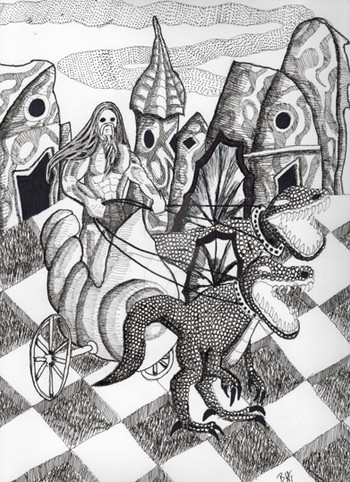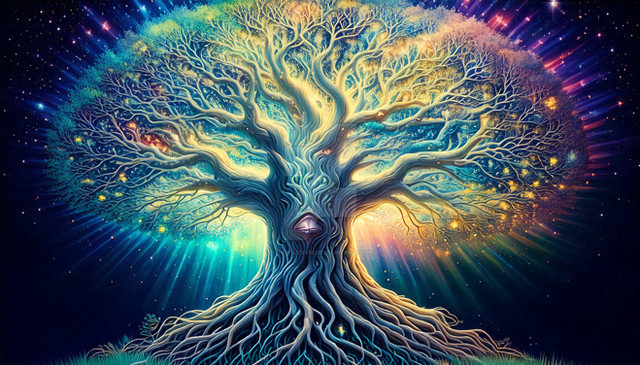HOME | DD
 LEXLOTHOR — Lagrangian Ring
LEXLOTHOR — Lagrangian Ring

#cosmology #gasgiants #gravitation #jovian #mathematics #planets #lagrangepoints #rochelimit #astronomy #exoplanet #astronomicalart
Published: 2015-10-27 00:24:07 +0000 UTC; Views: 1457; Favourites: 24; Downloads: 5
Redirect to original
Description
More of my astronomical and space travel art can be seen in my DA "Space Art" gallery:lexlothor.deviantart.com/galle…
I had the opportunity to speak to one of the researchers on NASA's Kepler Mission in person. I asked if the instrument were capable of distinguishing the light curves of a distant exoplanet with a large moon, a double planet, or a Trojan point companion. He assured me that NASA Goddard would be sifting for the data for any evidence of such planetary systems. So far no candidates have been identified.
It is theoretically possible for true double-planets of any size to exist. These would be defined as a pair of planetary bodies in the same orbit around a parent star that orbit each other about a common barycenter that lies outside the surface of both bodies. A barycenter is like the tipping point of a teeter-totter. It is the point in space relative to the two bodies in which their individual gravitational attraction balances. The Earth and the Moon are not a double planet because the barycenter of the Earth-Moon system lies deep within the interior of the Earth.
In this image I imagine a double planet consisting of two "small" gas giants in the Neptune mass range. They must be very close to each other in mass (perhaps within a few percent of 50/50) in order to have formed together. Beyond the ice line of a star system where volatiles such as water freeze out it is unlikely for two gas giants to share the same orbit without one of them gobbling up the other very early in the evolution of the planetary system. They are more likely to collide, or for one of them to eject the other from the orbit or for both to settle into new separate orbits. A dance such as this may have been played by Uranus and Neptune early in the development of our own Solar System.
If one supposes the existence of a stable double-giant binary, then an interesting gravitational hat trick becomes conceivable. It is nearly impossible for Saturn-like rings to form around the pair. Any ring system possessed by either of the giants would be scattered in a very short interval as seen on cosmic time scales. I asked myself what would happen to any dust or icy material in their vicinity. Could Neptune-like ring arcs survive? No, that wouldn't work and a figure eight (8) Mobius strip around the two would be ridiculous. Particles would quickly collide, lose velocity and fall into the planets.
It dawned on me that if the two giants were so spaced that the barycenter of the system coincided with the L-1 Lagrangian point of the two, then there might be a stable spot for material to collect in the manner of Jupiter's retinue of camp followers that lie at the Solar-Jovian L-4 and L-5 points. Since this L-1 point lies below the Roche limit of both bodies, no moon of any size could form without being torn apart by tidal forces. However, particulate matter could stay there for extended periods. This material would collect within the mutual equatorial plane of the double-worlds. Because each gas giant would itself have a tidal bulge permanently facing the other the disc of ring matter would be highly elliptical in plan view. Even a slight difference between the mass of the two giants would force the ellipse to favor one of its two loci. Solar tides of the system's sun would cause the Lagrangian ring to precess as the two giants spin around each other. Presumably the giant's mutual rotational period or day would have settled into whole integer resonance with their solar orbital period or year.
If a comet, asteroid or other small body were lucky (or unlucky) enough to stray between the grist mill of these two gas giants, it would be pulverized. Some of the matter would be ejected from the system and some of it would deorbit into the planets. Over cosmological time, many such encounters would replenish the material stuck in the rotating limbo between the two worlds. It would be a constantly shifting swirl of material that would expand and contract, thin out and clump within well-defined limits. It would be constantly deforming like a clock face made out of mercury.
If any one with the mathematical chops can either validate or falsify this conjecture, please let me know. I am also considering the possibility of an actual planet occupying the mutual L-1 Point of a similar system.
art & text (c) John P. Alexander
2.5" x 3.5" art card rendered in Prismacolor pencils, Tombow markers and acrylics.

























